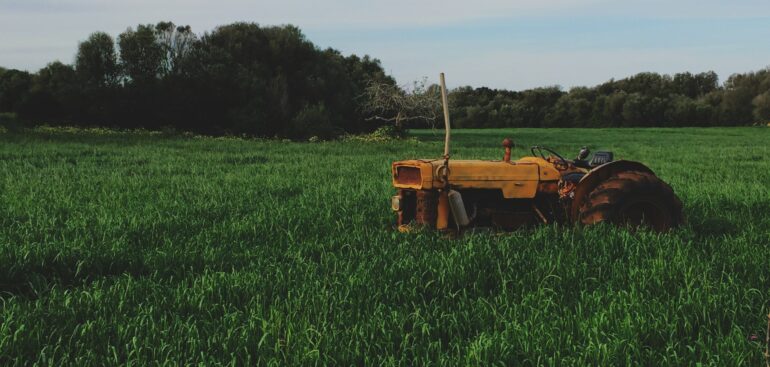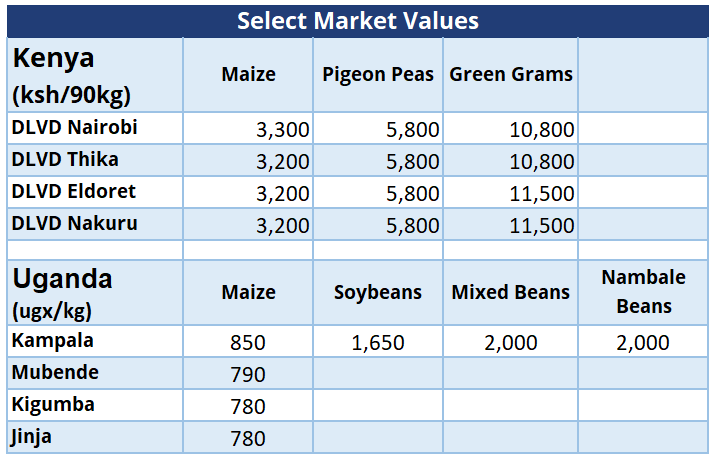Africa News
Kenya
Markets
Pulses and Maize prices have stabilized in the last weeks due to the onset of harvesting of the pulses and imports of maize from Tanzania and Uganda respectively. This has also been bolstered by the release of more maize from the Strategic Food Reserve. While they currently stabilized, there could be pressure to break below ksh 3,000 in the next week or two.
The volumes of pulses harvested was not as expected due to the fact that the rains came in late and not at the right quantities.
Weather
The dry spell has set in in most parts of the country and is expected to continue up to mid October when the rains will set in, although some parts are still experiencing the cold weather which is expected to continue into the next one week.
Uganda
The harvest continues with maize coming into the Greater Kampala market at UGX 1,000 per kg while in Mubende it is quoted at UGX 900 per kg. There continues to be a lot of grain with high moisture content due to the late rains that have affected the drying processes in the growing regions. Soybeans remain at UGX 1,700 to UGX 1,750 per kg in Kampala as more will be coming out of the fields for drying. Nambale beans are quoted at UGX 2,100 per kg in Kampala.
Maize is currently trading at UGX 850 per kg in the Kampala area with more grain coming into the capital. There still seems to be high moisture content in the grains as the weather has not been favourable for drying conditions. Soybeans are trading at UGX 1,650 per kg ex Kampala as prices begin to settle as the remaining growing areas go into the last period of harvesting before they start planting for the next season. Beans are available at UGX 2,000 per kg.




